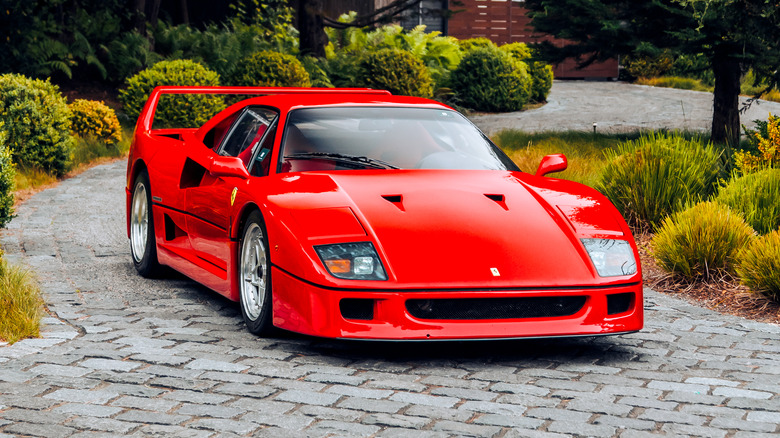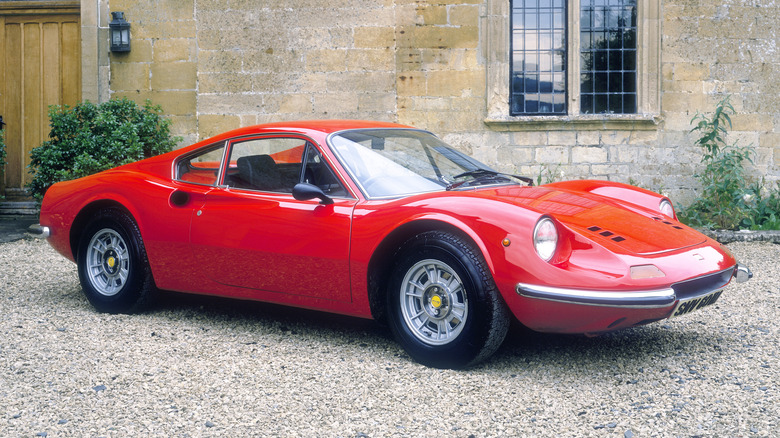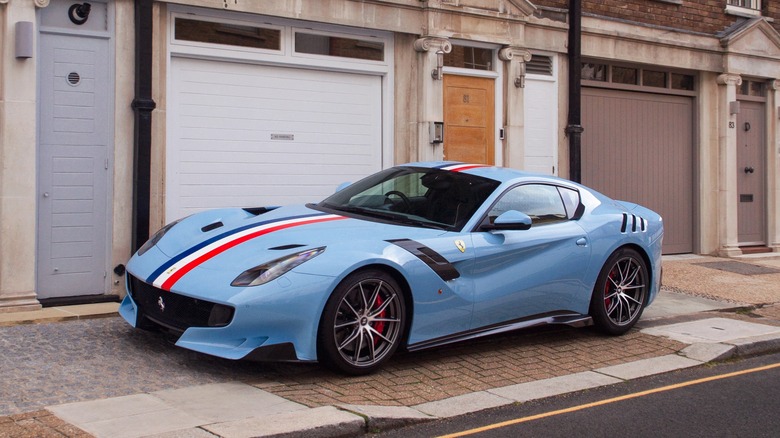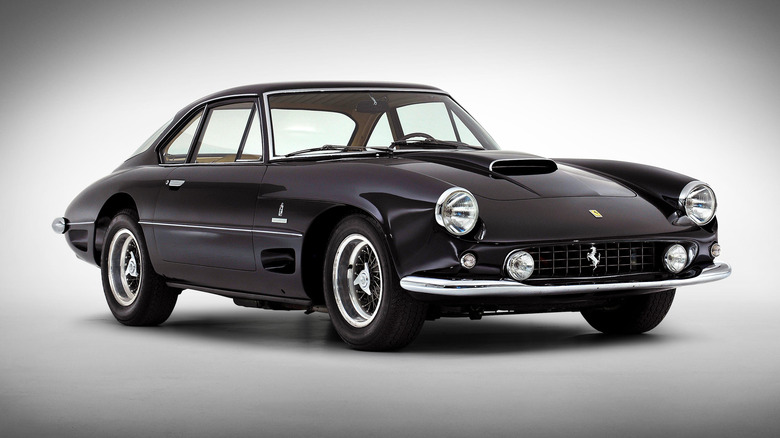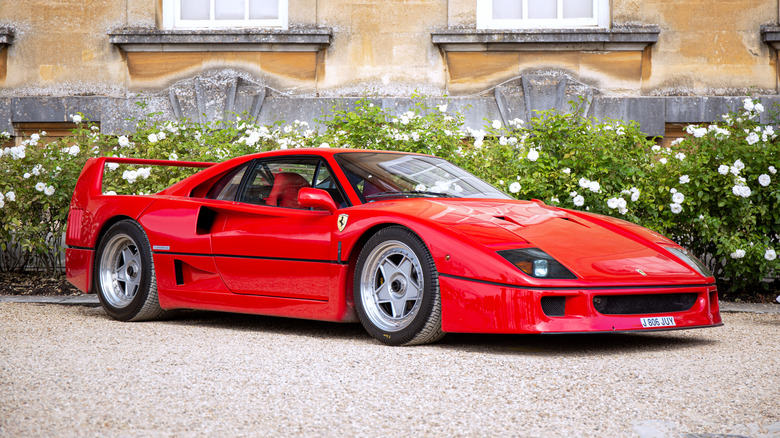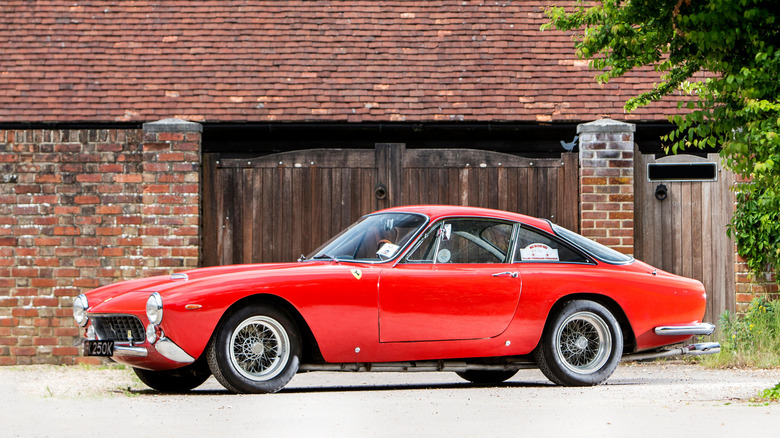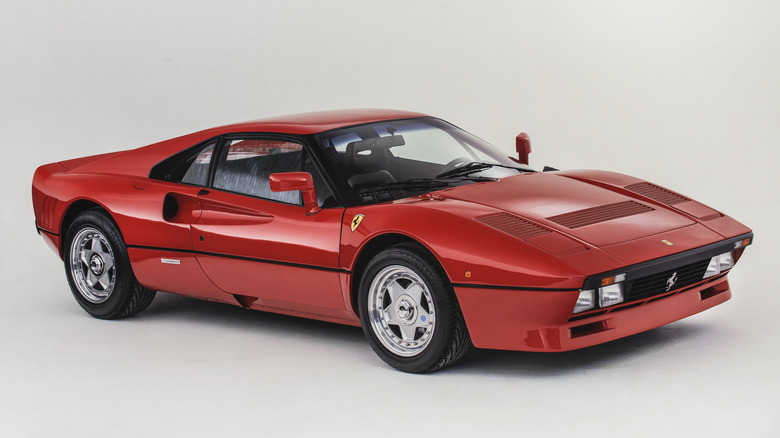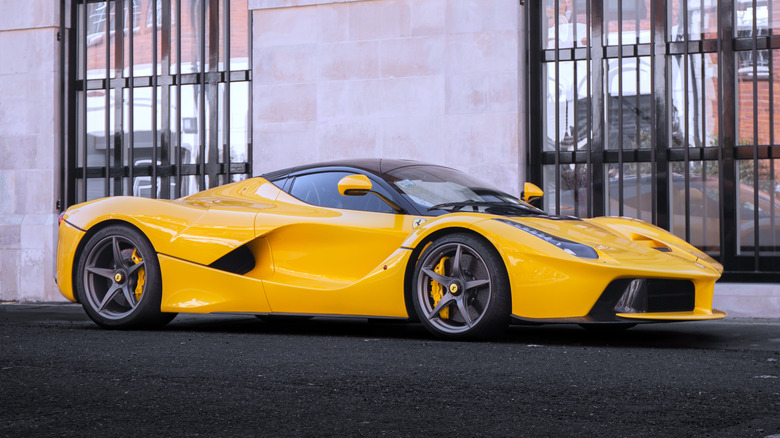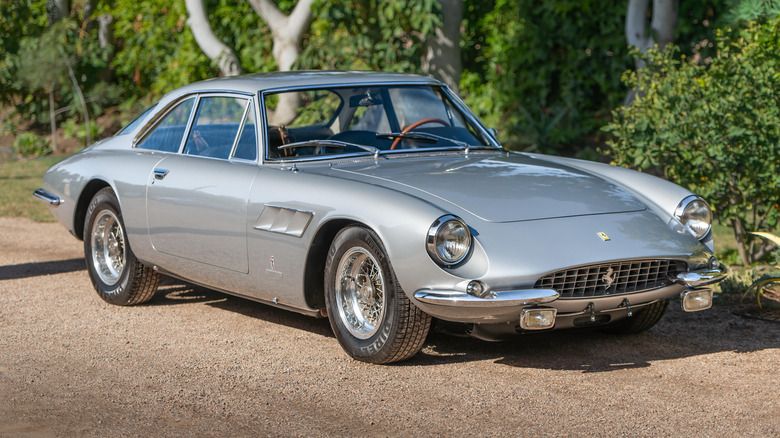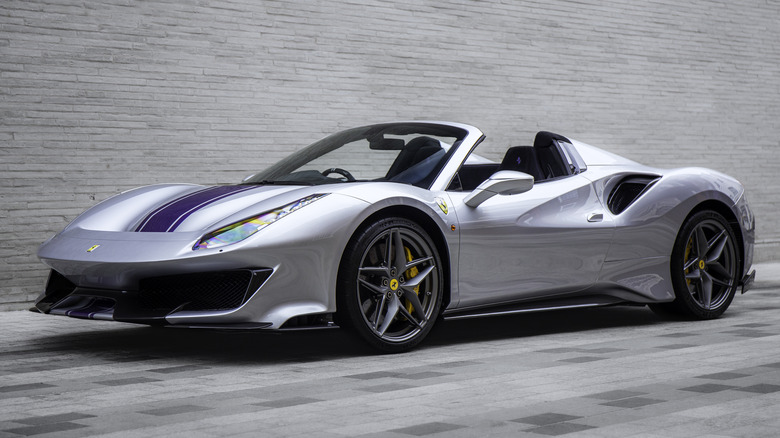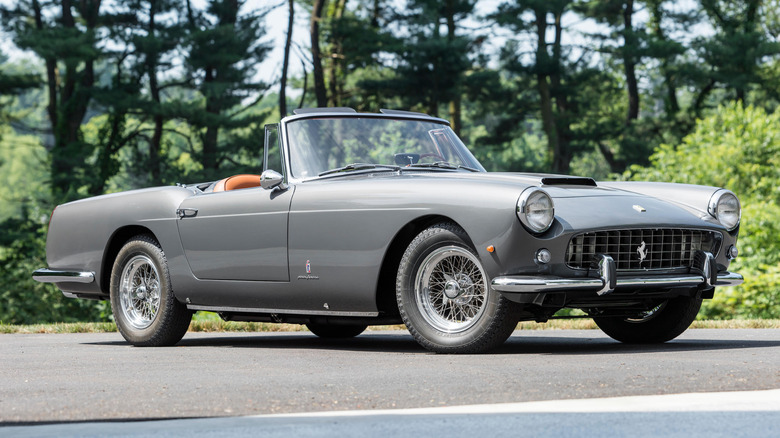The 10 Best Looking Ferrari Models Ever Designed
Ferrari's cars are seen by many as a benchmark, in terms of both performance and prestige. Many competitors have attempted to establish themselves as true Ferrari rivals over the decades, but few have succeeded. The brand's continued appeal among enthusiasts can be put down to a number of factors, with the biggest arguably being the brand's success in racing.
Ferrari has dominated circuits the world over, having proven its cars' capabilities in everything from sprint races to grueling endurance tests. That all-conquering nature is also reflected in its road cars, which — with a few exceptions — have almost always remained among the best in their respective segments. However, a key and sometimes overlooked factor in Ferrari's appeal is that it consistently makes cars that turn heads, with designs that would attract attention even if the car in question didn't sport the famed Prancing Horse badge.
In no particular order, SlashGear has selected our favorite Ferrari road car designs, each of which stands out from the rest for a different reason. Looks are of course always a subjective area and there are many stunning Ferraris that didn't make the cut, but these represent the best of the brand's back catalog so far.
Ferrari Dino 246 GT
The Dino brand was conceived as a sub-brand of Ferrari and featured smaller, less powerful engines than Ferrari-branded road cars, with its most famous model being the 246 GT. Those engines were built by Fiat, which had brokered a deal with Ferrari — Fiat wanted a new V6 engine, and Ferrari wanted a convenient way to increase its road car production numbers. The Dino brand was created as a way to satisfy both parties.
Visually, the car was an evolution of the Dino 206 GT design, which had been styled by Pininfarina. The two cars are very similar in appearance, although there are small differences both between the 206 and 246 and between different model years of the 246. Three separate series of the 246 were created, but each are arguably equally good looking.
The 246 GT was unveiled in 1969 and production continued until 1974, with 2,487 examples built. The car's rear-mid mounted V6 engine allowed for a significantly different chassis design than other Ferrari models at the time, which in turn contributed to the car's unique styling. Its classic, elegant lines have retained a timeless charm, keeping the car a hot commodity among collectors and making it arguably one of the greatest Ferraris ever built.
Ferrari F12TdF
One of the most significant changes that Ferrari has undergone this century is the transition from relying on third-party design studios to in-house design. Particularly within the past decade, Ferrari's in-house Styling Centre has rapidly expanded, taking responsibility for both the brand's higher-selling cars and often its most exclusive models. As a result, long term partners like Pininfarina have been cast by the wayside. The Ferrari F12 TdF is one of the highlights of this transitional period of Ferrari design, being one of the earliest limited-run specials styled in-house by the Ferrari Styling Centre.
It adapts the bodywork of the F12berlinetta into a new, more racing-inspired form, with more aggressive aero and prominent vents around the car. Its name is an homage to the Tour de France, a classic cross-country race comprising both road and track-based racing. To excel in that race, a car needed to be able to transition between both environments seamlessly, being just as comfortable racking up miles on public roads as it was hunting apexes on the circuit. It seems fitting, then, that a car that pays homage to this ability to transition between road and track is also one of the best looking cars to emerge from Ferrari's transitional design period.
Ferrari 250 GT SWB Speciale Aerodinamica
It would be criminal to compile a list of the best looking Ferraris without mentioning at least one example of the legendary Ferrari 250 series. Opinions differ between enthusiasts about which exact iteration of the 250 is the prettiest of all, but for our money, we think the 250 GT SWB Speciale Aerodinamica is up there with the best. It was one of the first Ferraris to have its design shaped by wind tunnel testing, with its slippery design inspired by the 400 Superamerica.
While the front of the car looks similar to other 250 SWB models, the bumper-integrated taillights give it a distinctive appearance from the rear. The interior was a cut above other 250 models too, with even the inside of the car's trunk fitted with quilted leather. Just three examples were ever built, with the car reserved for Ferrari's most demanding clients, including the Shah of Persia. Its rarity and beauty has kept the SWB Speciale Aerodinamica one of the most valuable 250 variants over the decades, with the Shah-owned example selling at Bonhams in 2014 for $6.88 million.
Ferrari F40
Few Ferrari road cars can claim to encapsulate an era quite as completely as the Ferrari F40. SlashGear has previously argued that the car was in a league of its own compared to the brand's other models, perhaps with the exception of the 288 GTO. The F40 was in fact the direct successor to the 288 GTO, marking only the second entry in the brand's halo car line. It was, however, a drastically different car, taking design influences from circuit racing rather than the Group B rallying influences of its predecessor.
It was an entirely new car on the outside too, with Pininfarina being tasked with penning the F40's now-iconic silhouette. The car distinctive appearance is accentuated by a lack of panel gaps, since only 11 composite panels were used for the whole car. Rather than add weight and complexity with a traditional hatch opening, the rear panel could be removed entirely for easy access to the engine. This removable panel included the large, integrated rear wing, which is easily one of the most prominent wings that Ferrari has ever fitted to a road car.
The F40 was designed to commemorate 40 years of Ferrari production, but it would also become famous for a separate, more tragic reason: it was the last car to be personally overseen by Enzo Ferrari before his passing in 1988. In total, 1,311 examples would be built, making the car both a rare and sought-after collectors' grail today.
Ferrari 250 GT Lusso Berlinetta
The Ferrari 250 GT Lusso Berlinetta was the last variant of the 250 series, offering a more road-focused, luxurious experience without compromising on performance. It featured a 3.0L V12 engine and could reach 100 mph from standstill in under 20 seconds, but it also offered the comfort and features necessary for long, cross-continental jaunts across Europe.
Its styling was an evolution of earlier 250 variants, with its chassis of similar dimensions to the 250 SWB variants despite its GT designation implying it was a long wheelbase variant. This shorter wheelbase than earlier GTs gave it a sportier, more dynamic look, while it retained the upscale features and finish associated with those earlier road-focused models. The 250 GT Lusso Berlinetta arguably combined the best of racing 250 styling and roadgoing 250 luxury, and so it's little surprise that it continues to be highly sought after among collectors. The pictured example sold at Bonhams in 2018 for over $1 million after having been under its previous ownership for a remarkable 46 years.
Ferrari 288 GTO
Like many great road cars, the Ferrari 288 GTO – officially referred to under just the "GTO" moniker — was originally conceived as a homologation special. It was designed to allow Ferrari to enter Group B rallying, but thanks to a ban of the category in the mid-'80s, it never raced. It did, however, become a halo road car for Ferrari, and with only 272 examples built, it was a very exclusive one at that. Its styling takes influences from previous Ferrari road cars like the 308, but with an altogether more muscular appearance. To quote Ferrari, it had the appearance of "a 308 that had been on a course of steroids."
It was available only in red, with options for personalization much more limited compared to Ferrari's regular road cars. The entire car was also hand-built, with Ferrari returning to the low-volume production techniques it had made its name with in the '60s. The 288 GTO was designed as the spiritual successor to the 250 GTO, not just in terms of its planned racing career but also in terms of its appearance. It was created to showcase Ferrari's racing heritage, and while it was visually related to other cars in its lineup, it was simultaneously unlike anything the brand had unveiled before.
Ferrari LaFerrari
While the LaFerrari is one of the more controversial picks here, as its styling has plenty of detractors as well as admirers, few could argue against its status as one of the most iconic hypercars ever made. It marks not only a milestone in Ferrari history, being the first production plug-in hybrid with a Prancing Horse badge, but also a milestone in performance car history, forming one-third of the "holy trinity" alongside the Porsche 918 Spyder and McLaren P1.
Its styling was shaped primarily by Ferrari's extensive aerodynamics research, with its engineers using computer simulation and wind tunnel testing to perfect the design. Another challenge during the design process was how to accommodate the hybrid system — the LaFerrari is no larger than the Enzo, yet it needed to fit an additional motor and battery.
Arguably, the biggest design triumph of the LaFerrari is that the brand managed to make something so visually striking and still Ferrari-like with the considerable design constrictions. It's also one of Ferrari's most technically advanced cars to date, even if it doesn't hold quite the same sway with SlashGear readers as its ancestor, the 288 GTO.
Ferrari 500 Superfast Series II
While today it's considered one of the most sought after cars on the market, during the '60s there was a select group of Ferrari clientele who decided a 250 GT wasn't exclusive enough. In response, Ferrari developed the Superfast series, featuring an uprated V12 engine and with production limited to just one example per month. Only 37 examples were ever made, with the later Series II variant being the rarest of the two iterations. Alongside its superior mechanicals, the 500 Superfast featured unique styling penned by Pininfarina.
It was designed to be as aerodynamic as possible but also strike a grander, more opulent tone that the 250 GT — this was, after all, a car so expensive that only the wealthiest individuals in the world could afford it. The oval grille and raised trunk differentiate it from other Ferrari models, while the three vents along the side of the car mark it as a Series II. While the Superfast series doesn't have the same recognition as the 250 among many enthusiasts, it's still in demand from collectors in the know. The example pictured above recently sold at a Bonhams auction for $1.93 million.
Ferrari 488 Pista
The first thing to note about the Ferrari 488 Pista would be its performance prowess. With more than 700 horsepower on tap, it was the most powerful V8-engined Ferrari ever unveiled at the time of its release. It was also more aerodynamic than the 488 GTB upon which it was based, with design elements borrowed from Ferrari's extremely successful endurance racing program. With all these innovations, many could forgive Ferrari for overlooking the car's stying, yet its designers excelled in that regard, too.
The 488 Pista's looks reflect its sharper performance — they're relatively subtle, but effective at creating a silhouette that looks notably different to the "regular" 488 GTB. There's plenty of exposed carbon on display, but Ferrari did without the over-the-top rear wing or bolt-on aero bits that many track specials rely on to convey their racing connections.
The accent stripe continuing beneath the F1-style S-duct at the front of the car is another unique touch, alongside the race-style seatbelts in the interior and the new 10-spoke wheels. It might not be as outlandish as some of Ferrari's other limited-run cars, but the 488 Pista arguably represents the pinnacle of what a modern V8 Prancing Horse should look like.
Ferrari 250 GT Cabriolet Series II
Very few other cars encapsulate timeless open-air elegance as neatly as Ferrari 250 GT Cabriolet. The Series II model, such as the pictured example that recently sold at Bonhams for $1.68 million, is arguably the very best looking open-air 250 — although of course, there are always some enthusiasts who would disagree. With its Pininfarina bodywork and a 3.0L V12 engine under the long hood, the 250 Cabriolet Series II was beloved of high-profile owners across the globe.
It was mechanically and stylistically very similar to the 250 GT Coupé, albeit with the key difference that owners of the Cabriolet could feel the wind in their hair while they were driving. Like many 250 variants, the appeal of the Series II Cabriolet comes down to its timeless looks, which still manage to turn as many heads six decades on as they did at their unveiling. Few other classics at any price point are quite as elegant as the Ferrari 250, especially in open-top Cabriolet form.
